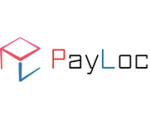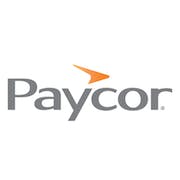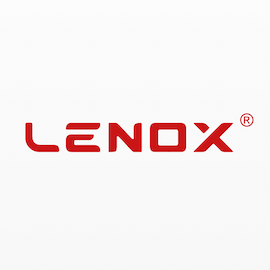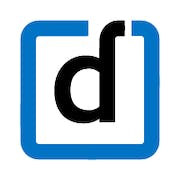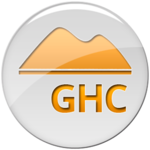Looking for the best employee scheduling software? Our expert guide has got you covered. Make the best decision for your business.
Managing employee schedules is an essential task that businesses of all sizes must handle. Efficient and effective employee scheduling is more important than ever. Employee scheduling software is designed to take the hassle out of managing schedules, streamline the scheduling process, and optimize employee utilization.
Whether you're a small business owner or a large organization, this technology can help you save time, money, and resources while ensuring that your business runs smoothly. It is estimated that organizations spend $466 billion on enterprise systems, including workforce management software. Choosing the right one can be a daunting task, but this guide will help you understand what to look for and what to expect from the best one on the market.
What is employee scheduling software?
This is a tool used by businesses to manage and automate employee scheduling. It streamlines the scheduling process, saving time and reducing errors, while also providing real-time insights into schedule changes and employee availability.
Here are some of its common use cases:
-
Shift scheduling: It easily create and manage employee schedules, including shift swaps, time off requests, and vacation planning.
-
Time and attendance management: It also automatically track employee hours and attendance, ensuring accuracy and compliance with labor laws. In recent years, 91% of large sized organizations reported that they already adopted time and attendance workforce management applications.
-
Communication and collaboration: This software keeps employees informed about schedule changes, shift swaps, and other important updates through real-time notifications and messaging.
-
Workforce management: It allows businesses to gain insights into employee performance and productivity, identifying opportunities for optimization and efficiency.
-
Forecasting and planning: It uses data analytics to forecast labor needs and optimize scheduling, reducing labor costs and improving overall business outcomes.
Companies in a wide range of industries use this scheduling tool, including retail, healthcare, hospitality, and manufacturing. Any business that relies on a team of employees to operate can benefit from this type of software, especially those with a large workforce and complex scheduling needs.
What are the benefits of investing in an employee scheduling tool?
This solution has become an essential tool for businesses of all sizes and industries. It ensures that every employee is assigned to a task or shift that aligns with their skills and availability, while also complying with labor laws. Here are its main benefits:
Efficient scheduling
By automating tedious scheduling tasks, the system allows managers to spend more time focusing on more critical aspects of business operations. Real-time scheduling updates can also be done from anywhere, even on mobile devices, reducing conflict and stress.
Enhanced employee satisfaction
An employee scheduling program offers more flexibility for employees to fill up their unassigned shifts, swap shifts, and request time off with minimal interactions. Thus, employees feel empowered and valued, leading to higher employee satisfaction and retention rates.
Cost reduction
Having the right employees at the right time can reduce the need for costly overtime or temporary workforce during peak seasons, ultimately resulting in reduced labor costs. This platform can also analyze work trends and provide insights for better decision making on staffing needs.
Improved collaboration
Employee scheduling software can create transparency and share data among managers and employees alike. Enabling greater alignment between shift workers leads to more productive and efficient teamwork.
Compliance
It can ensure businesses comply with labor laws by monitoring scheduling practices, such as maximum work hours and other regulations, avoiding costly penalties and litigation.
This affordable solution aids to manage and schedule staff, increasing productivity and decreasing stress, thus benefitting both employees and managers.
10 key features of employee scheduling software
With a wide range of software options available on the market, it can be challenging to determine which one will best fit your business's needs. To help you make an informed decision, we’ve compiled a list of 10 common features found in this tool.
-
Shift scheduling: One of its most critical features is the ability to schedule shifts. This allows managers to designate which employee will be working which shift or department, ensuring that all shifts are filled and that the right number of employees are scheduled to work during peak hours.
-
Time and attendance tracking: Many employee scheduling software solutions offer time and attendance tracking features that enable employees to log their hours, punch-in and out, and request time off. This helps to eliminate errors and inaccuracies in tracking time worked, leading to better productivity and employee satisfaction.
-
Employee self-service: This feature is an essential tool for employees, allowing them to view their schedules, request shift swaps, and time off requests, and communicate with their managers. This helps to reduce the workload for managers and enables employees to have a more active role in managing their schedules.
-
Reporting and analytics: The scheduling software solutions also offer reporting and analytics tools that allow managers to track employee performance, including attendance rates, tardiness, and other key metrics. This information can help managers make informed decisions about staffing, scheduling, and other business processes.
-
Mobile compatibility: Today, many businesses are adopting mobile devices as part of their daily operations. An employee scheduling application that is compatible with mobile devices like smartphones and tablets allows managers to view schedules, approve time off requests, and make schedule changes on the go.
-
Availability management: Availability management is a critical feature that helps managers know when an employee is available to work. This eliminates the need to manually track employees' availability, which is time-consuming and error-prone.
-
Automatic scheduling: Some apps offer automated scheduling capabilities, which can help managers to save time and reduce errors when creating schedules. With this feature, it will automatically generate a schedule based on employees' availability and preferences.
-
Real-time updates: Real-time updates allow managers to receive instant notifications when changes are made to an employee's schedule. This helps to ensure that everyone is on the same page and reduces the likelihood of missed shifts or scheduling conflicts.
-
Compliance management: Many businesses must comply with labor laws and regulations when it comes to employee scheduling. Compliance management features in employee scheduling software help businesses stay compliant by ensuring that schedules meet legal requirements.
-
Integration: It can integrate with other business systems like payroll, HR, and point-of-sale systems. This can help to simplify operations, reduce errors, and improve overall efficiency.
While there are many features available, these 10 listed above are some of the most common and beneficial for businesses of all sizes.
Things to consider when adopting an employee scheduling system
Employee scheduling can be a headache for managers, especially in large organizations where scheduling is required for multiple departments. However, businesses can streamline this process by adopting a scheduling solution. Before making a purchasing decision, it is important to consider several factors.
First and foremost, the features of the app should meet the unique needs of the business. Does it allow for different types of scheduling, such as shift-based or project-based? Can it handle multiple locations and departments? Does it provide real-time scheduling updates and allow for easy scheduling changes?
Another factor to consider is the scalability. As businesses grow, they may need to schedule more employees, manage more locations, or introduce more scheduling complexity. Therefore, it is essential to choose a tool that can grow and adapt along with the business.
Ease of use is another important factor to consider. The application should be user-friendly and intuitive, allowing managers to easily schedule and manage employees without spending hours on training and setup. Integration with other business technology, such as payroll and HR systems, can also be a big advantage.
Compatibility and security are important considerations. The one you select should be compatible with existing hardware and software used by the business. Data security should also be a top priority, as employee scheduling software may contain sensitive employee information.
Market trends for employee scheduling software
With the changing trends in the job market, this year and beyond, we can expect to see several key trends emerge in this space. One of the most significant is the increased demand for scheduling flexibility, driven by the changing needs and beliefs of today's employees.
Another trend is the use of personalized scheduling solutions, which allow individual employees to select and manage their own schedules based on their availability and preferences. This approach not only empowers employees but also saves supervisors valuable time and resources.
Mobile-friendly tools and cloud-based systems are also expected to become increasingly essential in employee scheduling in 2024 and beyond. These solutions offer accessibility and convenience, allowing employees and supervisors to access schedules and communicate with each other from any location.
Finally, we can expect to see continued innovation in automated scheduling and AI-powered solutions, which can help streamline workflows, reduce errors, and optimize scheduling based on real-time data.
Lastly, the demand for employee scheduling software is on the rise, driven by the need to meet the changing needs and expectations of today's workforce. For businesses to remain competitive and meet employee needs, implementing all the above will be more critical than ever this year and beyond.
Conclusion
In conclusion, employee scheduling software offers significant benefits for businesses, streamlining processes and improving operational efficiency. Its features enable quick adaptation to changing demands, enhancing productivity and employee satisfaction. Across industries, companies can leverage this software to stay competitive, ensuring smooth scheduling processes for a more productive workforce. Whether addressing conflicts, reducing overtime, or improving communication, a scheduling system provides a comprehensive solution for modern organizations. Embracing this technology leads to substantial time and cost savings, fostering agility and responsiveness in the workplace.

